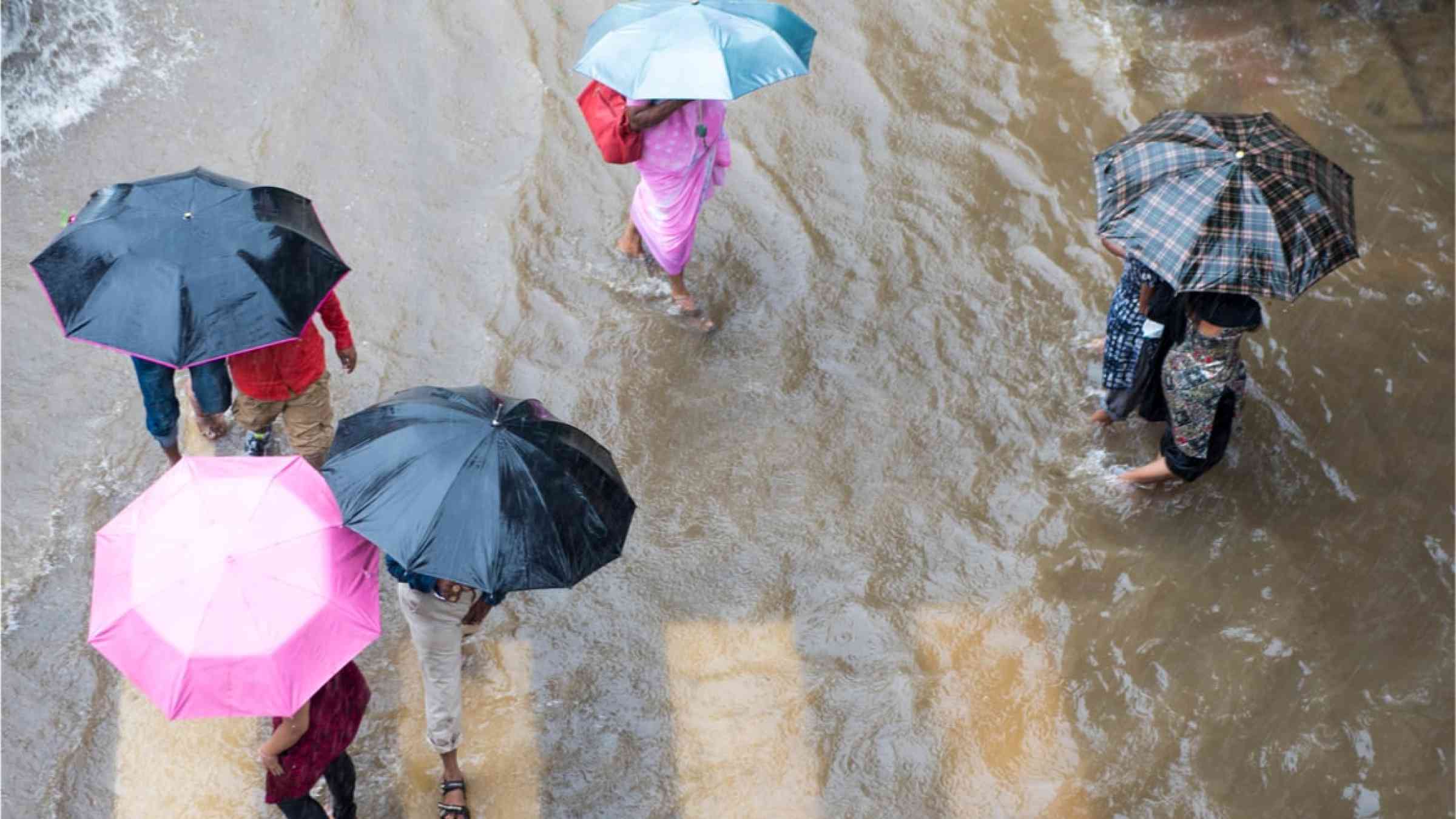Shifting winter storms bring more flooding to india

Western disturbances describe a system of winds that bring snow and rainfall to northern India during winter months.
They originate west of the Hindu Kush and the Himalaya mountains, sometimes as far away as the Mediterranean Sea, and are vital for ensuring water security across states in northern India.
A new study published in the journal Weather and Climate Dynamics found a seasonal shift in western disturbances: They are now occurring more frequently in summer months, when they were once rare. Western disturbances have become twice as common in June in the past 20 years than during the previous 50 years.
Typically, western disturbances occur between December and March. That timing benefits farmers and boosts water security, because the heavy precipitation recharges mountain glaciers and snowpack that lose mass in the warmer summer months.
“Winter precipitation is important for livelihoods [in northern Indian Himalayan states] because it ensures water availability in the subsequent spring season,” said A. P. Dimri, a climate scientist at Jawaharlal Nehru University who was not affiliated with the study.
“We had anecdotal evidence of western disturbances interacting with the monsoon, but now we have been able to show the trend.”
The snow and ice associated with western disturbances melt in the spring, making up a large proportion of runoff in the Indus-Ganges river system—an artery that provides water for irrigation, hydropower, and hygiene for the roughly half a billion people living in its plains.
But 70 years of storm track data from a climate hindcast (European Centre for Medium-Range Weather Forecasts Reanalysis version 5; ERA5) show that the western disturbance season has gotten longer. It now stretches into May, June, and July, when the weather pattern can sometimes interact with the summer monsoon, which begins in June. The result is worse flooding.
“In the winter, the atmosphere is drier because it’s colder. So western disturbances have to draw their own water from the Arabian Sea, and typically, they do not cause floods,” said Kieran Hunt, the author of the study and a meteorologist at the University of Reading.
A lot of the precipitation falls as snow, which melts slowly through the spring. But an overlap between western disturbances and monsoons—which carry about 6–7 times more moisture—can be catastrophic.
“We had anecdotal evidence of western disturbances interacting with the monsoon, but now we have been able to show the trend [in shifting patterns] more clearly,” Hunt said. Flash floods in 2013 in the Himalayan state of Uttarakhand claimed around 6,000 lives. They happened in June, when western disturbances struck during the summer monsoon. The same happened in July 2023, leading to floods in many northern Indian states, including in the capital, New Delhi.
The changing pattern of western disturbances is “very concerning,” especially because it has the potential to result in weather extremes, said Rajib Chattopadhyay, a meteorologist at the Indian Institute of Tropical Meteorology.
The Climate Link
Western disturbances are steered by the subtropical jet stream, a high-altitude air current.
Climate change has altered the jet stream’s movement: Polar regions have become warmer, reducing the temperature gradient between them and the tropical regions to the south. The force that used to draw the jet stream northward before the monsoon season is therefore weaker, extending the time storms pass over India.
“We need to give more attention to western disturbance forecasts.”
The weakening temperature gradient also means that the jet stream is more susceptible to local factors. One dominant local factor, according to Hunt, is the rapid warming of the Tibetan Plateau. Studies have previously shown that the region is warming at rates almost twice the global average. This makes the plateau warmer than surrounding regions, resulting in a temperature gradient that strengthens the jet stream, intensifying western disturbances and making them more frequent.
Another local factor, according to Hunt, may be the reduction in aerosols over northern India due to air pollution control measures, which has made the local atmosphere warmer and the temperature gradient stronger, also strengthening the jet stream.
“We need to give more attention to western disturbance forecasts,” Chattopadhyay said, adding that “it is useful to get some first-order outlook on impending disasters of flash flood, cloudbursts, etc., during monsoon and cold wave or snowfall during other seasons.”